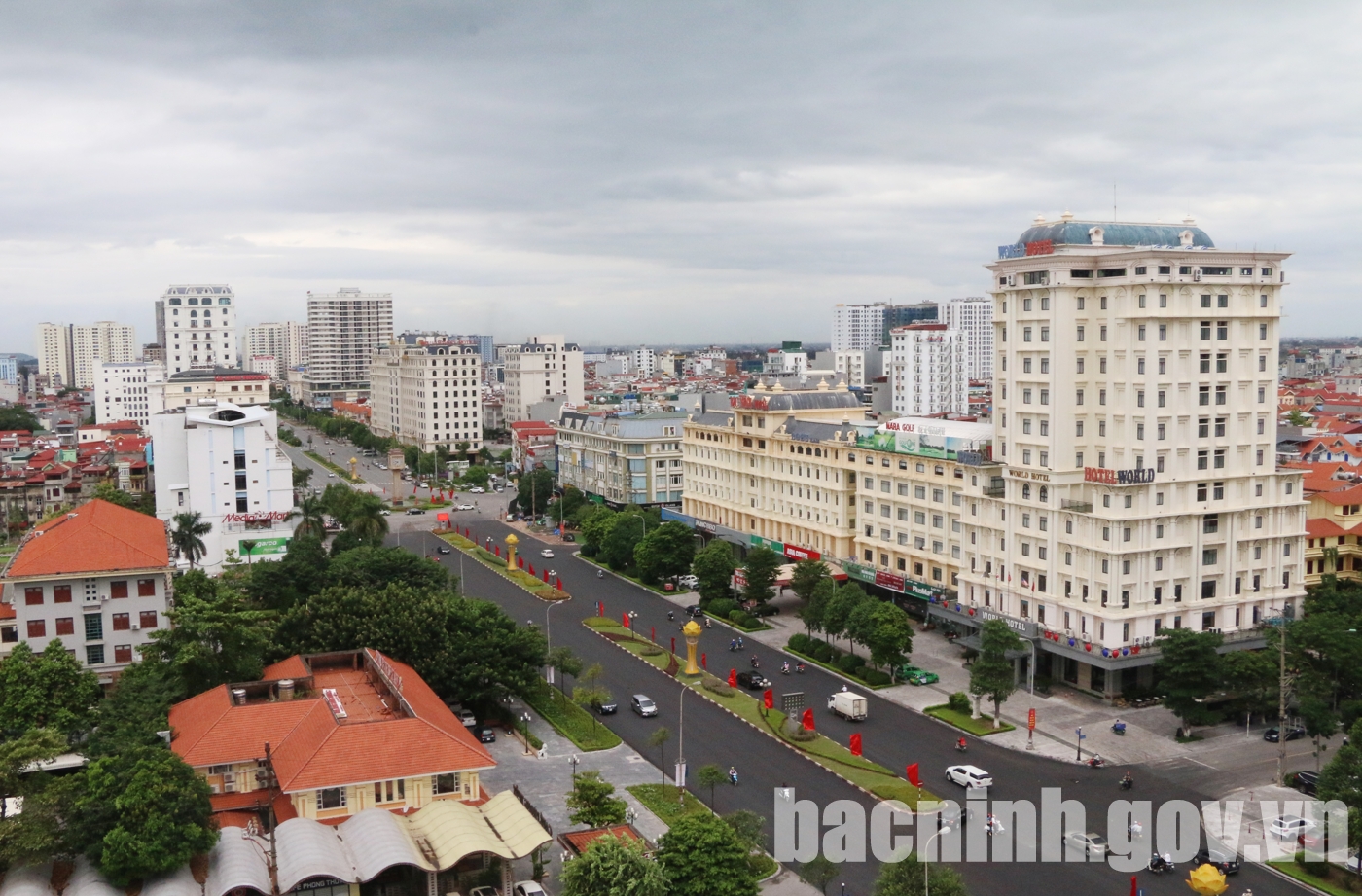Bac Ninh province strives to meet criteria for grade I urban areas and becomes a centrally run city by 2030
(BNP) - According to Bac Ninh province's planning for the period 2021 - 2030, vision to 2050 has been approved by the Prime Minister, Bac Ninh province strives to meet the criteria for grade I urban areas and become a centrally run city by 2030.

A corner of Bac Ninh city.
Accordingly, by 2030, Bac Ninh will be the dynamic economic and cultural center of the Northern region; one of the development poles of the Red River Delta, closely connected to the capital Hanoi; have a synchronously and modernly developed socio-economic infrastructure system. National defense, security and social order and safety are guaranteed. The people have a prosperous, civilized and happy life.
The average GRDP growth rate strives to reach 8 - 9%/year; the GRDP proportion of industry and construction accounts for the majority at about 72.7%; services at about 21.7%; GRDP per capita at current prices is about VND 346.6 million/person; export turnover is about USD 50 billion; total state budget revenue is about VND 47,000 billion... In addition, the rate of poor households has decreased to less than 1%, by 2025, the province will have no poor households according to the National poverty standard for the period 2021 - 2025; the urbanization rate has reached over 75%...
Vision to 2050, Bac Ninh will become a centrally run city, among the leading localities in the country in terms of economic scale; one of the leading high-tech industrial, research and development, and smart manufacturing centers in Asia and the world; a green, smart, modern, livable city with a high level of development, imbued with Bac Ninh - Kinh Bac cultural identity. People enjoy social services and a quality of life on par with developed countries in Asia.
Regarding urban planning, the whole province has 12 urban areas including: 01 type I urban area (Bac Ninh urban area), 01 type II urban area (Tu Son urban area), 04 type III urban areas (Yen Phong urban area, Que Vo urban area, Tien Du urban area and Thuan Thanh urban area), 06 type V urban areas (Gia Binh urban area, Thua urban area, Nhan Thang urban area, Cao Duc urban area, Trung Kenh urban area and Lam Thao urban area) .
Tien Du district and Yen Phong district are planned to become cities under the province. Bac Ninh province strives to have 04 cities before 2030 including: Bac Ninh, Tu Son, Tien Du, Yen Phong; 02 towns are Que Vo and Thuan Thanh; 02 districts are Luong Tai and Gia Binh.
In particular, Bac Ninh city will be the comprehensive center of administration - politics, culture, education, health and sports at the provincial level; an urban area with comprehensive and sustainable development in industry, commerce, services and finance.
Tu Son City is a center of culture, education - training, research and urban industry, tourism and entertainment.
Yen Phong city is the province's key industrial center, developing high-tech services and supporting industries at the regional level.
Tien Du City becomes a center of high technology, information technology, public services, commerce, entertainment, cultural tourism, experience, education, training and technology transfer.
Que Vo town is an urban center of industry, services, sports, and regional health, developing rural areas towards urban agriculture associated with eco-tourism and craft village tourism.
Thuan Thanh town is the urban and industrial center of the province, growing equally in both industry and services towards sustainable development.
In addition, the whole province is divided into 02 inter-district regions including: Bac Duong and Nam Duong. In particular, the Bac Duong region is a driving force for development, an integrated urban area, a key area in industrial production, high technology and manufacturing processing of the province, developing the trade - service industry, entertainment tourism.
The Nam Duong region is an urban - industrial - agricultural area, gateway and urban area along the Duong River, with priority given to the development of high-tech industry towards green, environmentally friendly industries; focus on developing high-tech agriculture and building new rural areas with developed social infrastructure.






